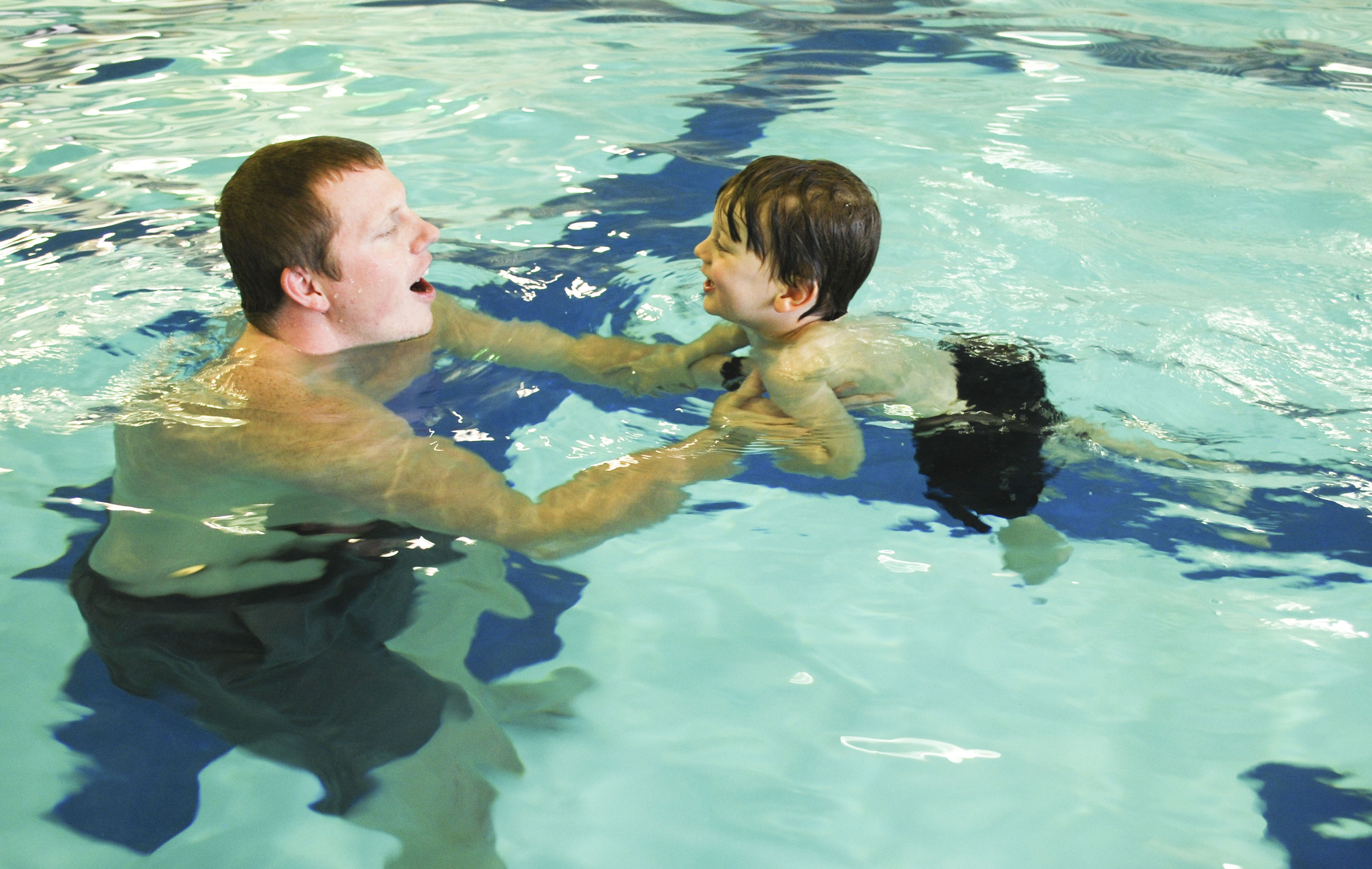Aquatics
Learn to Swim
What is Learn to Swim?
The objectives of the American Red Cross Learn to Swim courses are to teach children and young teens to be safe in, on, and around the water, and to swim well. Aquatic and personal water safety skills are taught in a logical progression through six levels. Participants in Level 1 are oriented to the aquatic environment and gain some basic skills in each category. As they progress through the levels, participants build on their basic skills to learn and refine various propulsive movements on the front, back and side. On successful completion of Level 3, participants have achieved basic water competency in a pool environment. By the end of Level 6, participants have the prerequisite skills and have developed the necessary skill and fitness levels for entrance into advanced courses, such as Water Safety Instructor and Lifeguarding, or other aquatic activities such as competitive swimming and diving.

Level 1:
Level 1 introduces basic aquatic skills, which participants continue to build on as
they progress through Learn-to-Swim. In addition, participants start developing positive
attitudes, effective swimming habits and safe practices in and around the water. Learn-to-Swim
Level 1 skills overlap with the Preschool Aquatics Level 1 and 2 skills.
Level 2:
The objective of Learn-to-Swim Level 2 is to give participants success with fundamental
skills. Many of the skills taught in this level are the same skills taught in Preschool
Aquatics Level 3. This level marks the beginning of true locomotion skills. Participants
learn to glide and float without support and recover to a vertical position. Participants
further develop simultaneous and alternating arm and leg actions on the front and
back, laying the foundation for future strokes. New water safety topics are introduced,
and previously acquired water safety knowledge and skills are reinforced.
Level 3:
The objectives of Learn-to-Swim Level 3 are to expand proficiency of previously learned
skills by providing additional guided practice. Participants learn and practice survival
floating and learn to swim front crawl and elementary backstroke at rudimentary proficiency
levels. Participants are introduced to the scissors and dolphin kicks and extend the
time duration for treading water. Participants also learn rules for headfirst entries
and begin to learn to enter the water headfirst from a seated position at poolside
(if the water is 9 feet deep or deeper). As in all levels, new and previously addressed
water safety topics are included. Participants who successfully complete Level 3 have
achieved basic water competency in a pool environment.
Level 4:
In Learn-to-Swim Level 4, participants improve their aquatic skills and increase their
endurance by swimming the strokes learned in Level 3 (i.e., front crawl, elementary
backstroke) for greater distances and with more advanced proficiency. Participants
add arm actions to the previously learned scissors kick and breaststroke kick to perform
the rudimentary sidestroke and to learn the breaststroke. Participants also begin
to learn the back crawl and butterfly, as well as the basics of performing a simple
open turn at a wall.
Level 5:
In Level 5, participants refine their performance of all six strokes (i.e., front
crawl, back crawl, butterfly, breaststroke, elementary backstroke and sidestroke)
and increase the distances that they swim. Participants also learn to perform flip
turns on the front and back.
Level 6:
The objective of this level is to refine strokes so participants swim them with greater
efficiency and effectiveness over longer distances.
All swim lessons are held inside the Campus Recreation center in the Indoor Pool. Valid parking passes are required.